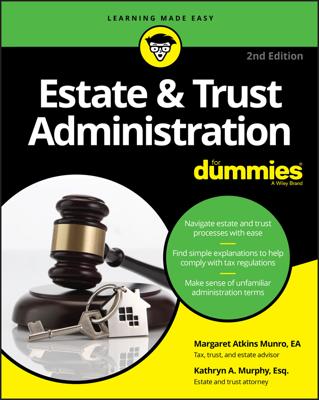All trusts have a grantor, the person who creates the trust. All trusts also involve trustees, beneficiaries, and remaindermen. The relationship of the grantor to the other individuals involved in the trust determines whether a trust is a grantor trust or a non-grantor trust. A third type of trust, the intentionally defective grantor trust, contains elements of both grantor and non-grantor trusts.
The trustees, beneficiaries, and remaindermen each play an important role in the trust:
-
Trustee: The trustee is the person that holds and administers the assets of a trust for the benefit of another.
-
Beneficiary: The beneficiary is the person who receives a benefit from the trust.
-
Remaindermen: The remaindermen is the person who receives what’s left of the trust’s property when it ends.
Grantor trusts: What happens when the grantor has control?
In grantor trusts, the grantor retains certain powers over the trust administration. These powers include the power to revoke (amend or terminate) the trust. The grantor also keeps control over the property inside the trust.For a grantor trust, the grantor is usually also a trustee and beneficiary of the trust’s income and principal. The principal refers to the property funding the trust. Items of income and deduction are generally declared on the grantor’s income tax return. The trust doesn’t have a tax identification number (TIN) or file its own return.
Non-grantor trusts: What happens when the grantor has no control?
In non-grantor trusts, the grantor has given up all right, title, and interest in the principal. Only the trustee may revoke or terminate the trust. In a non-grantor trust, the grantor cannot be named as a trustee, beneficiary, or a remainderman.Grantor trusts and intentionally defective grantor trusts become non-grantor trusts at the grantor’s death. A tax identification number for the trust must then be obtained. On December 31 of the year of the grantor’s death, the administrator becomes responsible for filing a Form 1041 for this non-grantor trust.
Intentionally defective grantor trusts
In an intentionally defective grantor trust (IDGT), the grantor makes an irrevocable gift of property into a trust, usually set up for the grantor’s children, and names someone else as trustee. The grantor retains the right to substitute other property of equal value for the property initially gifted. This is a type of estate-planning strategy.Unlike grantor trust income tax rules that make the income includible on the grantor’s Form 1040, the property is effectively transferred out of the decedent’s estate and into the trust. Gift tax is paid on the value of the property when it is transferred into the trust. No estate tax is due when the grantor dies.
When administering an IDGT, you must obtain a TIN and file a Form 1041 every year. On the face of the Form 1041, you must write: “Under the terms of the trust instrument, this is a grantor trust. In accordance with Sections 671-678 IRC, 1986, all income is taxable to the Grantor. Statements of income, deduction, and credits are attached.” The grantor then includes all those items on his or her personal return.

